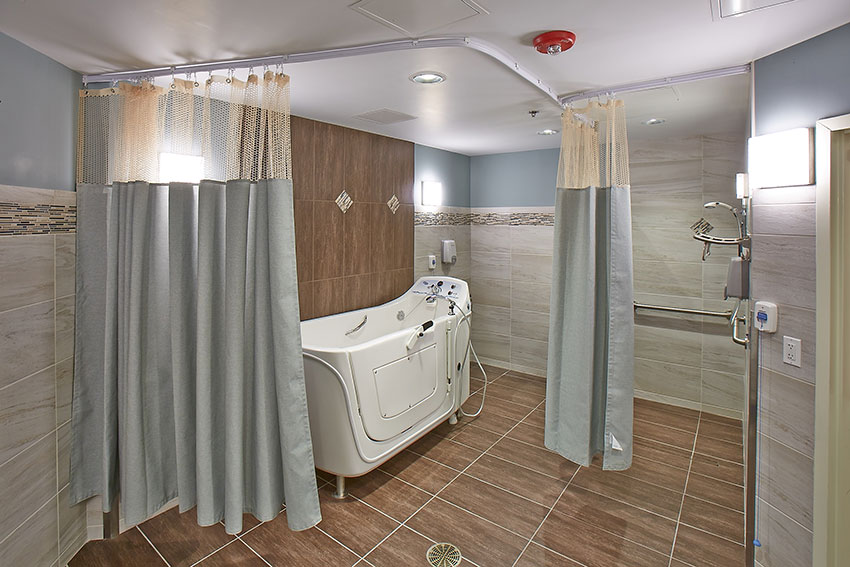From Survive to Thrive: Buildings that Enrich Health and Wellness
Learning Objectives:
- Describe how patient privacy and comfort are linked and how new product ranges, including door assemblies and curtains, can better enhance patient comfort.
- Specify artwork and wall protection that both enrich the healthcare environment and add to the durability, resilience, and sustainability of the facility.
- Select specialized door product assemblies to meet more stringent building requirements in the healthcare sector.
- Partner with product designers and developers to secure the best product assembly and materials to meet high performance or regulatory requirements, including specifications for acoustics, radio frequency, and security.
Credits:
This course is approved as a Structured Course
This course can be self-reported to the AANB, as per their CE Guidelines
Approved for structured learning
Approved for Core Learning
This course can be self-reported to the NLAA
Course may qualify for Learning Hours with NWTAA
Course eligible for OAA Learning Hours
This course is approved as a core course
This course can be self-reported for Learning Units to the Architectural Institute of British Columbia
The COVID-19 pandemic has shifted the dynamics in the U.S. healthcare value chain, reports McKinsey & Company.1 Since 2020, the healthcare industry has experienced radical changes and challenges. The enhanced role of technology and a shift towards value-based care have been transformative. Value-based payment models now reimburse healthcare providers based on the quality, rather than the quantity, of care delivered. Therefore, understanding and evaluating the patient experience is indispensable to improving healthcare quality and enabling healthcare partners to make the shift toward patient-centered care.
In addition to these changes, today’s healthcare spaces also face increasing regulations. Despite the challenges, design and construction product industries have responded, allowing healthcare professionals to better adapt and accommodate to heightened and changing expectations.
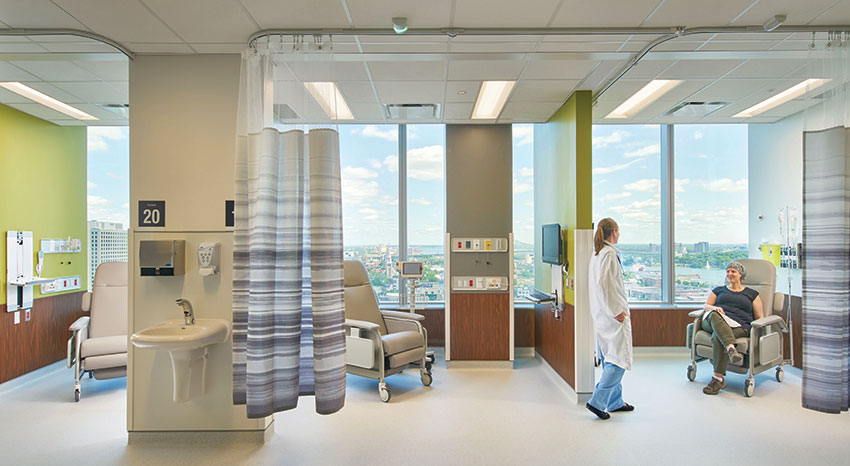
Photo courtesy of Inpro
Enriching the patient experience is a growing focus for healthcare design.
ENHANCING PATIENT COMFORT WITH INNOVATIVE PRODUCTS
When it comes to a hospital stay, research from the Wexner Medical Center shows patients and family members care deeply about privacy, accessibility, and comfort in their rooms, and that these very attributes can help patients recover from illness or surgery.2
“When we’re sick and feeling vulnerable, it’s especially important to feel in control of our surroundings—privacy, room temperature, lighting, window blinds, and having our things within reach,” says Emily Patterson, an associate professor at The Ohio State University College of Medicine, School of Health and Rehabilitation Sciences.3 Research findings from Patterson and her colleagues show that patients expect a hospital room that provides them with the core components of comfort to support healing, a space that facilitates a strong sense of connection to people and the outside world, a layout that enables quick and independent access to the patient’s things, and design that offers suitable levels of control to the patient throughout their hospital stay.4

Photo courtesy of Inpro
Privacy curtains create a valuable sense of place for patients, however managing their impact on auditory loads is an important–and overlooked–design factor. New materials and design facilitate quieter operation that minimizes noise disturbance.
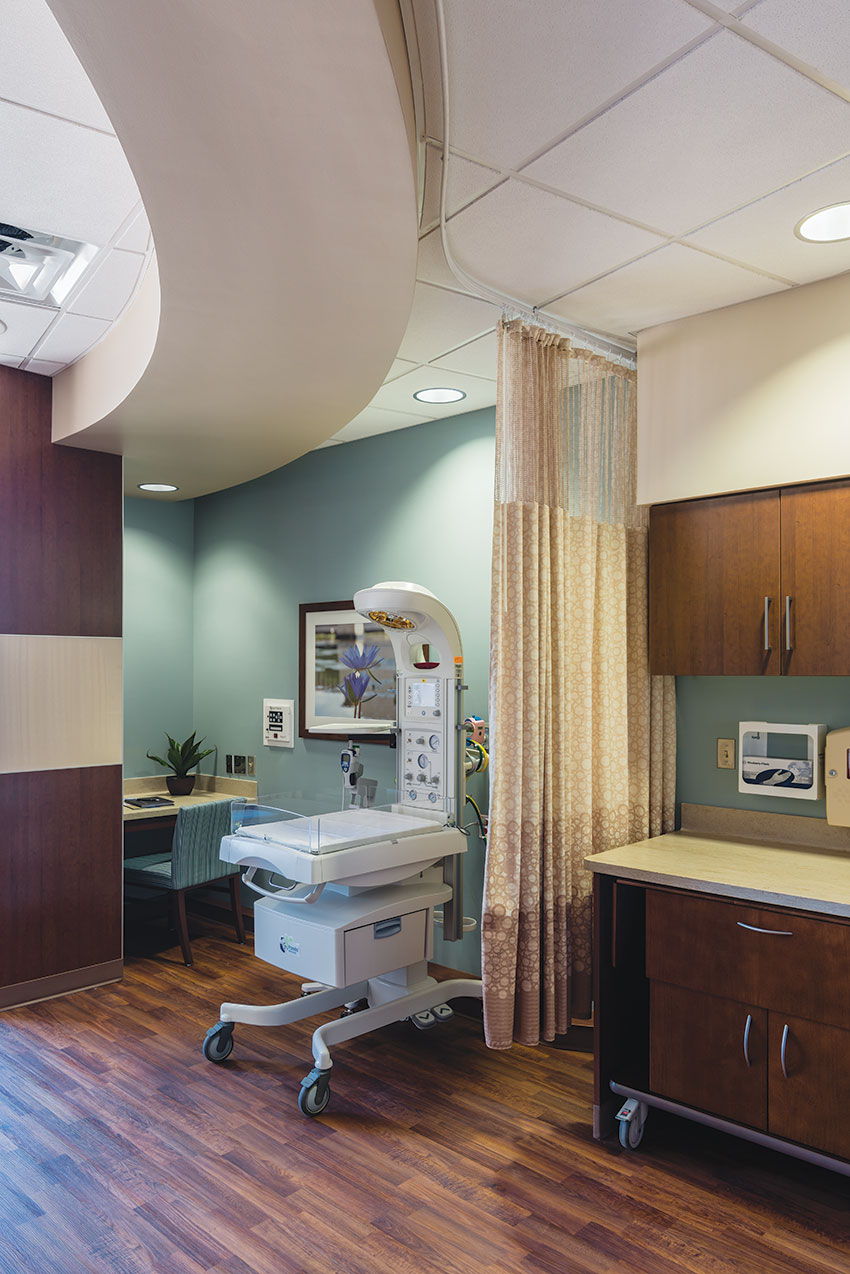
Photo courtesy of Inpro
Minimizing disruption to patient rest is critical in the healthcare setting. Cubicle curtains also create privacy and can enhance the ambiance of the environment.
The team at Wexner analyzed the comments and data collected during their research to create codes grouped on physical room space or need. From this, the researchers developed a theoretical design framework showing the key expectations for hospital room elements.
To help patients feel more comfortable, the research from Wexner found that patients need to have control of their privacy, including avoiding being “on display” to people in the hallway by having a privacy curtain at the room door, which they can control. Inside the room, patients want to use the bathroom without being seen or heard by visitors. In the highly sensitive healthcare environment, the effect of unwanted noise or exposure can be significant, aggravating patients’ health issues and impacting staff performance.
The Unseen Impacts of Noise in Healthcare Spaces
Securing a healing environment from unwanted noise and interruption can be challenging. In 1859, Florence Nightingale is credited with focusing attention on the impact of noise, saying “Unnecessary noise, or noise that creates an expectation in the mind, is that which hurts a patient.” Unfortunately, the auditory environment of the 21st century hospital is substantially louder, more complex, and more difficult to control than that of Nightingale’s time. While curtains offer added privacy for patients, their operation can compound this environment.
The noise generated by privacy curtains is often overlooked. The opening and closing of privacy curtains in a patient’s room contributes to noise levels. Traditional aluminum track noise ranks somewhere between the decibels generated by a busy residential road (80 dBA) and the inside of a bus (90 dBA). Numerous reports and studies point to the harmful effects of escalating or sudden noise, which include fractured sleep and slower healing. Long-term exposure to noise has been connected to a host of negative health impacts, from sleep disturbance and annoyance to the less-studied impacts on cardiovascular health, the metabolic system, and the cognitive development of children, notes Debra Levin.5
Sleep interruption caused by noise has a significant negative impact on health and healing. Intensive care psychosis or delirium has been directly linked to environmental stressors, including noise, sleep deprivation, and social isolation.
However, with innovations in material and product technology, the design community has more resources to secure privacy while also combatting noise in healthcare environments. Advances in curtain track design and materials, which allow the track to be bendable, also offer much quieter operation. New bendable curtain track operates at the more comfortable level of conversational speech (70 dBA) or less. Not only does the track minimize unwanted noise, but it also conforms to unique designs, allowing for better control of the space and movement for care.
A bendable curtain track was selected for all areas requiring privacy curtains at the St. Joseph Medical Center NICU in Tacoma, Wash. The track uses a recycled aluminum core coated in ABS to significantly reduce the decibels associated with curtain operation. The curtain track and carriers proved to be 75% quieter than the carrier-style track they replaced. The old curtain rail and carrier relied on a plastic carrier in a metal track, which tended to get stuck and slide, creating rattling. The plastic and metal together produced excessive noise. Average curtain noise, pre-renovation, was measured at 67 dB(A). Average measurement after the completed renovation, in areas using new, bendable curtain track, showed a standard measurement of 48 dB(A).
Notice
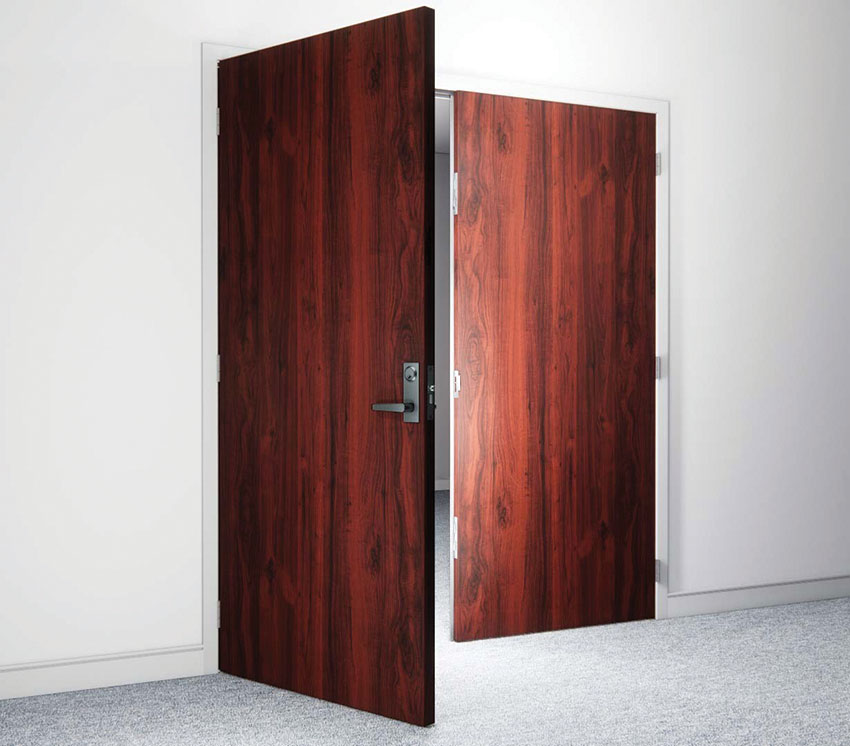
www.ambico.com
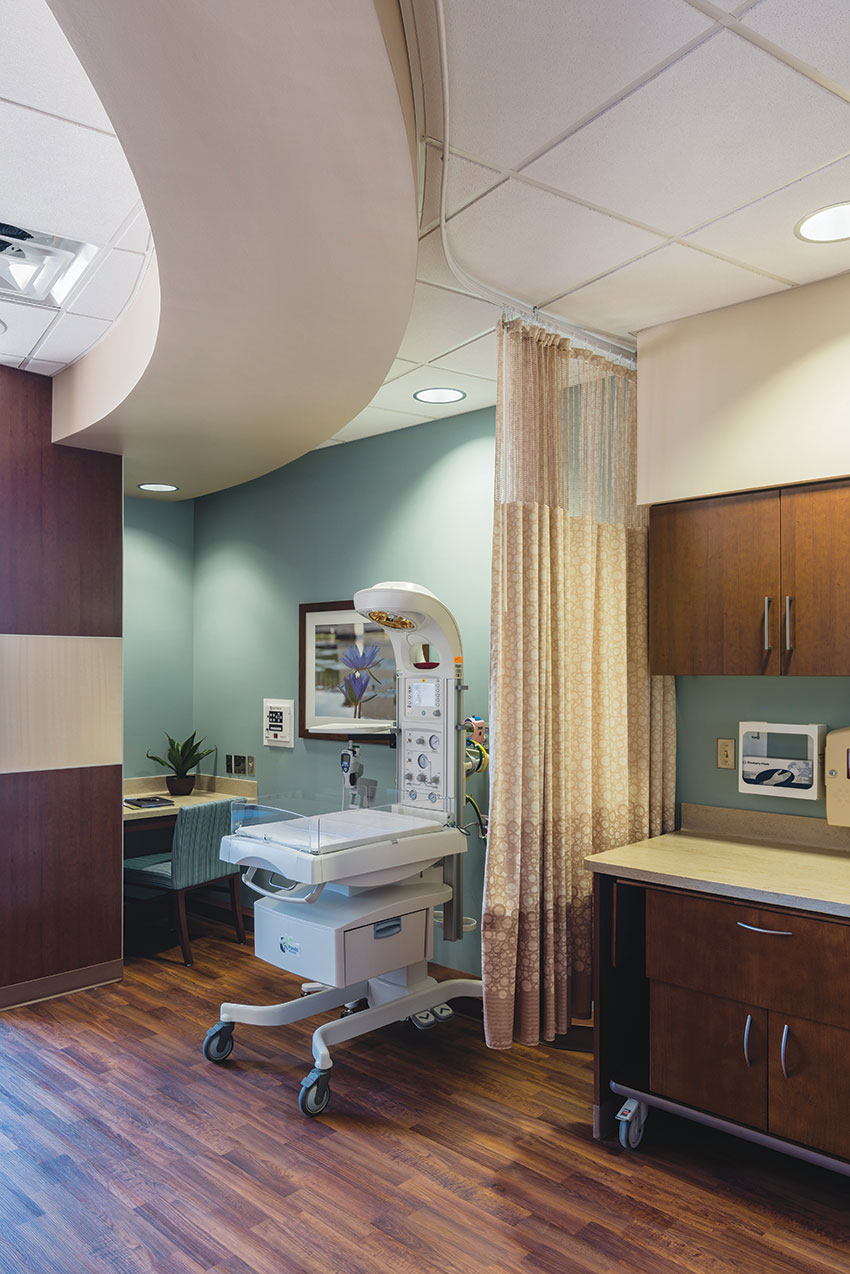
www.inpro.com
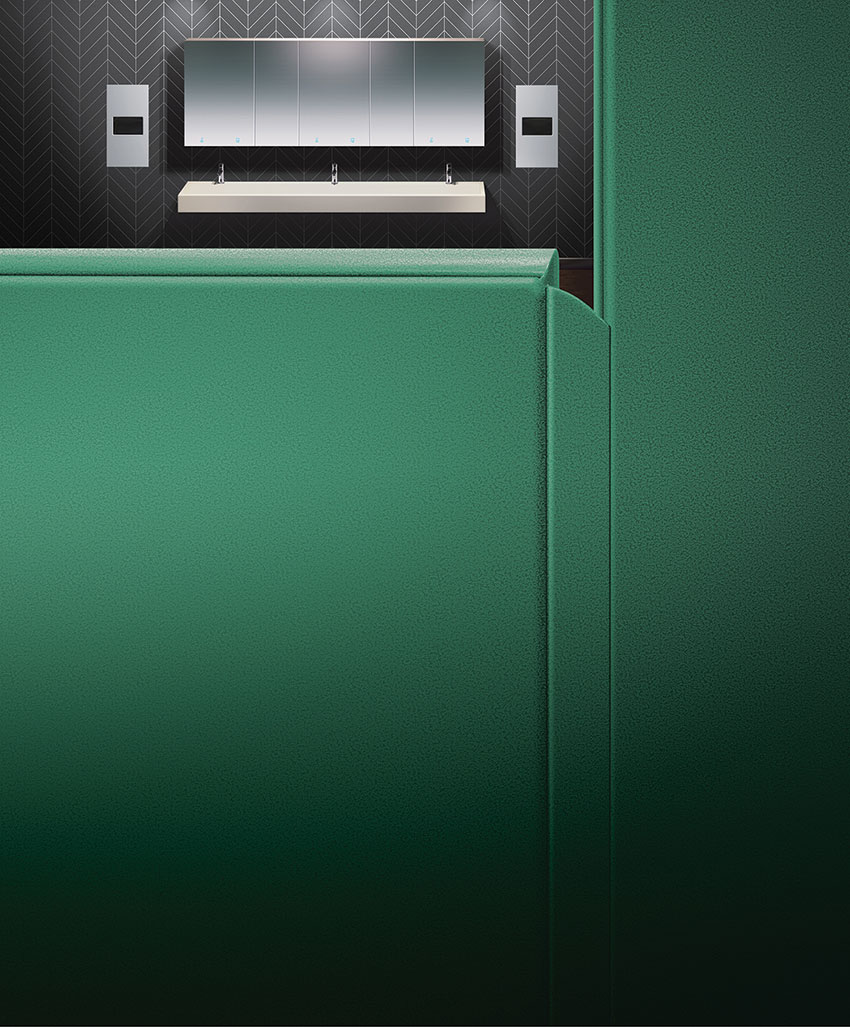
www.asigroup.us














